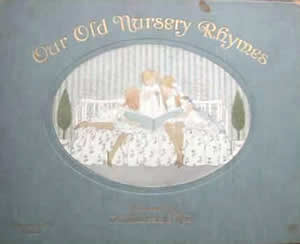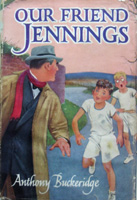Our Old Nursery Rhymes Illustrated by H. Willebeek Le Mair
View current stock of H. Willebeek Le Mair books
Published originally by Augener in 1911, this collection of 30 favourite children’s rhymes features original tunes harmonized by Alfred Moffat and is beautifully illustrated in the muted tones of Dutch artist Henriette Willebeek Le Mair (1889-1966). Each rhyme is depicted on the left hand side page, either in an oval or double-oval, bordered with flowers or foliage, all in full colour. On the right hand side page, the text of the rhyme is shown with its musical score and subsequent verses, again bordered with flowers and leaves, in an oval shape. I can imagine the many children who may have owned this book being entertained by, and singing along to, the piano music.





















